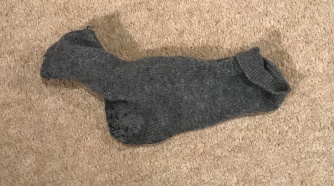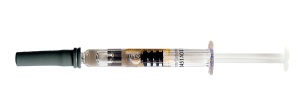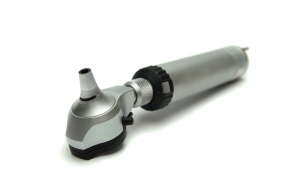Fax machines were once cutting edge. “I just got a sandwich faxed to my desk!” claimed a colleague in the early 90s.
He wasn’t quite right, as it happens, since only his order was transmitted by fax.

For those who aren’t sure how a fax works, the gist is that the original document is scanned, converted into a bitmap, then transmitted down a phone line as audio-frequency tones. The receiving fax machine deciphers the tones, recreates the image, and prints it more or less legibly.
Before email, fax was the only way to send a sizeable amount of data quickly without an expensive courier. It made it possible to send letters quickly and, for reporters, to submit articles to newspapers on the day without dictating them to copy-takers.
It also enabled my mother, who lived abroad and had, like most seniors, a keen interest in the weather, to keep me updated without phoning. I well remember the message in which she said it was SNOWING! (underlined three times). She seemed a bit miffed when I faxed back to ask what she expected from Switzerland in January.

I also had a relative in the Middle East who liked using fax. She generally rang first to tell me her message was on its way, and her pronunciation was different to most. As my children enjoyed putting it, “Aunt Delia likes sending fux.”
The desktop fax came into existence around 1948, but it wasn’t widely used until the 1970s and 1980s. Some machines used dedicated lines, while others shared with a regular phone by means of a switch which didn’t always work. Well, mine didn’t.
Another snag is that one rarely knew how many pages would come in, so the supply of paper had to be kept topped up. My roll of thermal paper often ran out inconveniently mid-flow, like a loo roll. And the paper, being thermal, was useless for archiving as the print soon faded like a receipt. You’d have to photocopy the image or message to preserve a record.

Some machines were advanced and did colour, but smaller businesses, like individuals, tended to have basic models and the image definition wasn’t great. When I was arranging the funeral of a cousin, there was a choice of coffins. As it wasn’t clear over the phone how they differed, the undertaker offered to fax over images of each one. This generated a long ribbon of paper with blurred photos that looked identical. Still, I expect the details made little difference to dear cousin Gladys at that stage.
The arrival of email meant the end of the fax for most, but the NHS doggedly continued to favour faxes for important communications such as urgent referrals, citing confidentiality as the reason. Emailing was banned for transmitting patient info – despite the fact that NHSmail is encrypted. Perhaps nobody at the top considered the risk posed by a clutch of paper messages sitting in the out tray of a machine for all to see.
Thus the NHS became the biggest purchaser of fax machines. Some hospitals had over 600 of the things each, and of course GP practices needed them too, using up money that could have found its way into patient care.
Now the NHS has seen the light and the new GP contract decrees that by April 2020 all GP practices should become fax-free. Some already are, but it’s possible that not all practices, or the agencies they deal with, will be prepared to unplug their faxes despite the 17 pages of guidance on the subject. The death throes of the fax, I suspect, could go on for a while.













